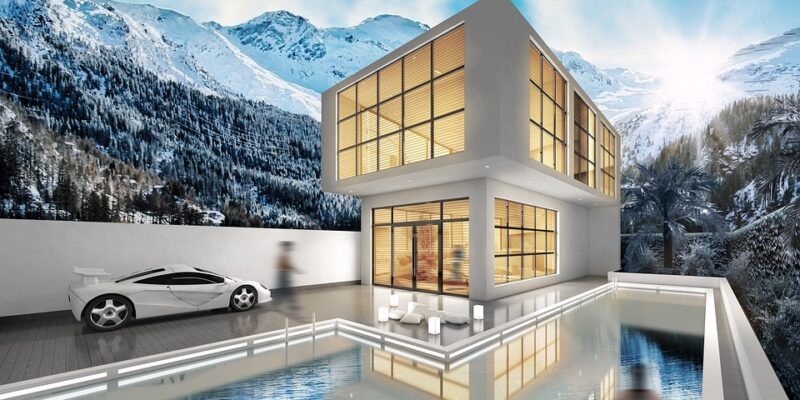Introduction
In the world of computer graphics, rendering is the process of generating an image from a 3D model. There are two main techniques used for rendering – photorealistic rendering and traditional rendering. Both methods have their own advantages and challenges, and are used in various industries such as architecture, interior design, gaming, and film.
Photorealistic Rendering
Photorealistic rendering is a technique that aims to create images that are indistinguishable from photographs. This type of rendering focuses on creating highly detailed and realistic images by simulating how light interacts with materials in a scene. Photorealistic rendering uses complex algorithms and advanced lighting techniques to create convincing images.
Advantages of Photorealistic Rendering
One of the main advantages of photorealistic rendering is the level of realism that can be achieved. The images produced through photorealistic rendering are incredibly lifelike, with accurate lighting, shadows, and textures. This makes them ideal for showcasing architectural designs, interior spaces, and product visualizations.
Another advantage of photorealistic rendering is the ability to make changes and adjustments to a scene easily. Because the rendering is done digitally, designers can experiment with different lighting setups, textures, and materials without having to physically build or rearrange a scene. This flexibility allows for quick iterations and modifications, saving time and resources in the design process.
Challenges of Photorealistic Rendering
Despite its advantages, photorealistic rendering also comes with its own set of challenges. One of the main challenges is the computational complexity of creating highly realistic images. Photorealistic rendering requires powerful hardware and software to process the complex lighting calculations and simulations needed to create realistic images. This can result in longer rendering times and increased costs.
Another challenge of photorealistic rendering is achieving realism without crossing into the uncanny valley. The uncanny valley refers to the phenomenon where a digital image or character looks realistic enough to be convincing, but still feels slightly off or disturbing. Achieving the perfect balance of realism without triggering this effect can be a difficult task for artists and designers.
Traditional Rendering
Traditional rendering, also known as non-photorealistic rendering, focuses on creating images that have a stylized or artistic look. This type of rendering is often used in animation, video games, and illustrations to create unique visual styles that may not be achievable through photorealistic rendering techniques.
Advantages of Traditional Rendering
One of the main advantages of traditional rendering is the ability to create visually appealing and stylized images. Traditional rendering allows for more creative freedom and experimentation with different artistic styles, such as watercolor, cartoons, or cel-shading. This can give a project a unique and distinctive look that sets it apart from photorealistic renderings.
Another advantage of traditional rendering is the potential for faster rendering times. Because traditional rendering does not require the same level of detail and complexity as photorealistic rendering, it can be completed more quickly. This can be beneficial for projects with tight deadlines or limited resources.
Challenges of Traditional Rendering
While traditional rendering offers advantages in terms of creativity and speed, it also has its own challenges. One of the main challenges of traditional rendering is the lack of realism compared to photorealistic rendering. Traditional renderings may not accurately represent real-world lighting, textures, or materials, which can be a drawback for projects that require a high level of realism.
Another challenge of traditional rendering is the limited flexibility in making changes to a scene. Because traditional rendering is often more stylized and artistic, making significant changes to a scene can be difficult and may require starting from scratch. This can be time-consuming and may limit the ability to iterate and experiment with different design ideas.
Conclusion
In conclusion, both photorealistic rendering and traditional rendering have their own strengths and weaknesses. Photorealistic rendering excels in creating highly realistic and detailed images that are ideal for showcasing architectural designs and product visualizations. However, it comes with challenges such as computational complexity and the potential for falling into the uncanny valley.
On the other hand, traditional rendering offers creative freedom and the ability to create unique and stylized visuals that may not be achievable through photorealistic rendering techniques. While traditional rendering may have faster rendering times and greater flexibility in artistic expression, it may lack the realism needed for certain projects.
Ultimately, the choice between photorealistic rendering and traditional rendering depends on the specific needs and goals of a project. Designers and artists should consider factors such as realism, creativity, rendering time, and budget when deciding which rendering technique to use. By understanding the strengths and challenges of both methods, professionals can create compelling and visually appealing images that bring their designs to life.
